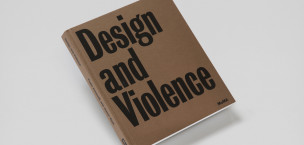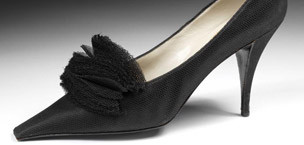DESIGN AND VIOLENCE
Archive
Authors
About
Design has a history of violence. It can be an act of creative destruction and a double-edged sword, surprising us with consequences intended or unintended. Yet professional discourse has been dominated by voices that only trumpet design’s commercial and aesthetic successes.
Historically, designers’ ambitions have ranged from the quotidian to the autocratic, from the spoon to the city. Under the guise of urban renewal or the cliché of disruptive innovation, designers of all kinds—from architects and typographers to interface, product, and fashion designers—have played a role in the reconfiguration of ways of life, ecosystems, and moral philosophies. Although designers aim to work toward the betterment of society, it is and has been easy for them to overstep, indulge in temptation, succumb to the dark side of a moral dilemma, or simply err.
Violence, on the other hand, is one of the most mutable constants in history. It accommodates myriad definitions, spanning a wide spectrum between the symbolic and the real, and between the individual and the public. In recent years, technology has introduced new threats and added dramatically to its many manifestations. Our exploration of the relationship between design and violence will shed light on the complex impact of design on the built environment and on everyday life, as well as on the role of violence in contemporary society.
As we define it, violence is a manifestation of the power to alter circumstances, against the will of others and to their detriment. We have assembled a wide range of design objects, projects, and concepts that have an ambiguous relationship with violence, either masking it while at the same time enabling it; animating it in order to condemn it; or instigating it in order to prevent it. Almost all were designed after 2001. We see that year as a watershed because it marks four historical shifts in the modern evolution of violence: the beginning of a permanent War on Terror; a global shift from symmetrical to asymmetric warfare; the emergence of nation-building as an alternative to military supremacy; and the rise of cyberwarfare. The few exceptions—the AK-47, for instance—are archetypal examples of the entanglement between design and violence in the 20th century.
We will group the projects into the following thematic categories:
Hack/Infect: disrupting the rules of the system
Constrain: binding, blocking, and distorting
Stun: causing blunt trauma
Penetrate: infiltrating the boundaries, breaching
Manipulate/Control: drawing into the realm of violence with suasion
Intimidate: promising damage and death
Explode: annihilating visibly and completely
We are inviting experts from fields as diverse as science, philosophy, literature, music, film, journalism, and politics to respond to selected design objects and spark a conversation with all readers. Pairing the critical thinkers we most admire with examples of challenging design work, we intend to present case studies that will spark discussion and bring the relationship between design and violence to center stage for designers and the people they serve—all of us.
Design and Violence is organized by Paola Antonelli, Senior Curator, Department of Architecture and Design, MoMA; Jamer Hunt, Director, graduate program in Transdisciplinary Design, Parsons The New School for Design; Kate Carmody, Curatorial Assistant, Department of Architecture and Design, MoMA; and Michelle Millar Fisher, Exhibition Coordinator, Department of Architecture and Design, MoMA. See Paola discuss the project in process at Eyeo 2013 in Minneapolis.
The website was designed by Shannon Darrough, Senior Media Developer, Department of Digital Media. Initial design by Luke Keller. Creative direction by Allegra Burnette, Creative Director, Department of Digital Media. Website development by Arrow Root Media.
Please follow us at @desviolenz
The content submitted by authors and participants to the Design and Violence site does not necessarily reflect the official opinion of the Museum of Modern Art.




No comments:
Post a Comment